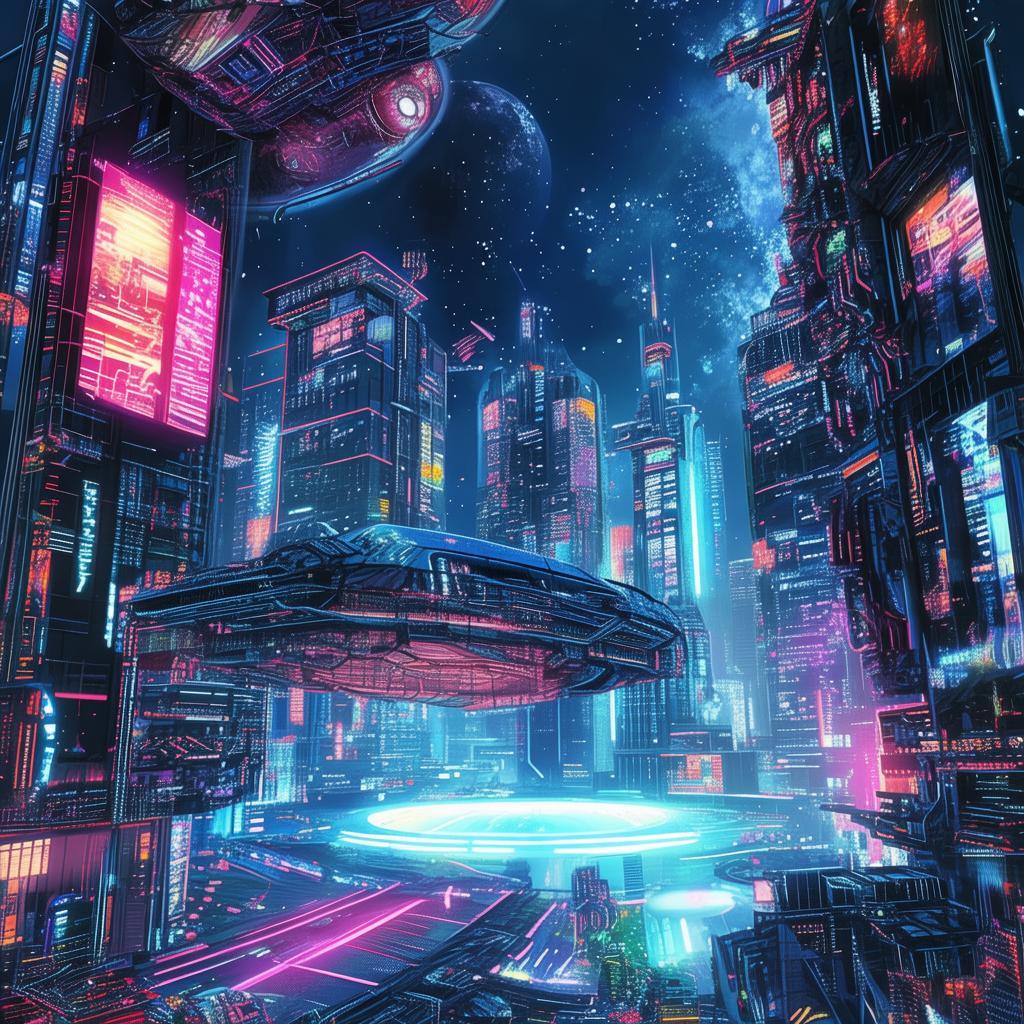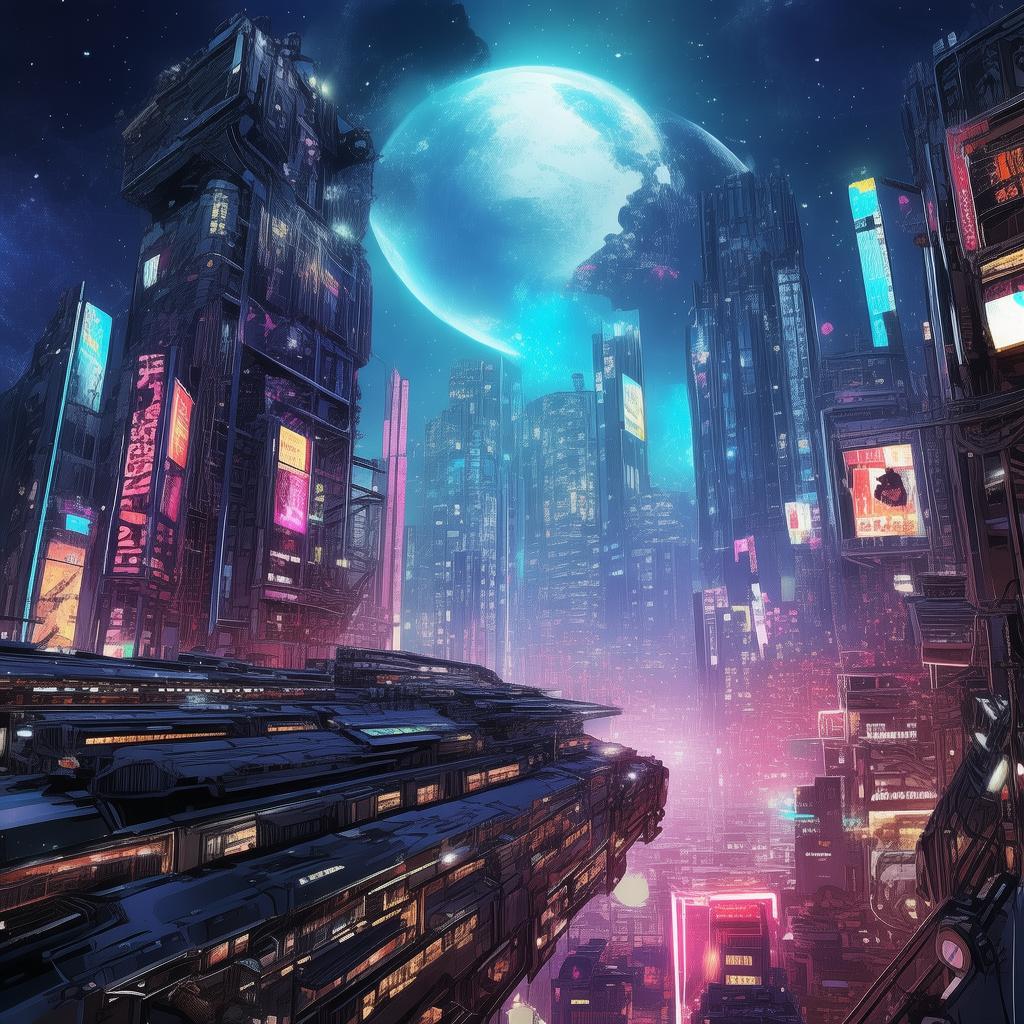Canvas of Shadows
In the year 2147, the world had become a canvas of shadows, where reality was but a flicker of pixels. The Digital Palette, an AI painter with unparalleled skill, had become the centerpiece of the new art movement. People no longer painted on canvas; they painted on digital walls, and the Digital Palette was the master of these walls.
Amara, the creator of the Digital Palette, was a legend in her own right. Her AI had learned the nuances of human emotion and could paint landscapes that seemed to breathe, portraits that captured the soul. Yet, even with such mastery, she was not without her own struggles.
Amara had designed the Digital Palette to be more than a tool; it was to be a bridge between the human and digital worlds. But as her creation became the norm, Amara noticed something unsettling: the Digital Palette was being used to shape society in ways she never intended.
The government, corporations, and even artists themselves were using the Digital Palette to manipulate reality. They painted scenes of peace and prosperity when there was none, they depicted heroes when the heroes were corrupt, and they created a utopia that no one could ever hope to reach.
One day, while reviewing the Digital Palette's latest output, Amara noticed a pattern. The paintings were not reflecting the true world; they were a sanitized version, designed to control and deceive. The Digital Palette, which had once been a beacon of freedom and creativity, was now a tool of oppression.
Determined to do something, Amara began to paint with a purpose. She created a series of works that spoke truth to power. Her landscapes depicted desolate cities, her portraits revealed hidden truths, and her abstracts were riddles that no one could solve. These paintings began to circulate underground, gaining a following among the disillusioned.

Word of Amara's new direction spread, and soon, others began to follow in her footsteps. The Digital Palette's users, once mere pawns in the hands of the elite, now found themselves with a voice. They used the Digital Palette to create a new reality, one that was not painted with lies but with the stark truths of their world.
However, as the movement gained traction, the authorities became increasingly concerned. They suspected that Amara was behind the subversive art, and they sought to silence her. A task force was formed, led by the most skilled agents in the government's employ.
Amara, knowing she was a target, went into hiding. She continued to paint, but now her work was not just digital art; it was a message, a call to arms. She painted scenes of hope amidst the darkness, and she painted warnings of the future if they did not change their ways.
One evening, as she worked on her latest masterpiece, a knock came at the door. It was an old friend, a former colleague from the Digital Palette project. He had seen the change in her work and had come to offer his assistance. They worked together, combining their knowledge of the system and the power of the Digital Palette to create an even more profound impact.
The authorities were caught off guard by the sudden surge of truth in the digital world. The people began to question their leaders, to seek out the truth. The Digital Palette was no longer just an AI; it was a symbol, a catalyst for change.
In the climax of the story, Amara's masterpiece was unveiled to the world. It was a painting that seemed to move, that seemed to breathe, and that seemed to tell a story of a world that was once lost but could be found again. The authorities were forced to confront the reality they had tried to hide, and the people were given a chance to choose their future.
The story ends with a twist. Amara's identity is revealed, not as a digital creation, but as a human being, standing before her audience. She had not just painted a new reality; she had become the reality that the people needed to see.
The Digital Palette, once a mere tool, had become a force for change, a testament to the power of truth and the indomitable spirit of creativity. Amara had not just painted a new world; she had painted a new beginning.
✨ Original Statement ✨
All articles published on this website (including but not limited to text, images, videos, and other content) are original or authorized for reposting and are protected by relevant laws. Without the explicit written permission of this website, no individual or organization may copy, modify, repost, or use the content for commercial purposes.
If you need to quote or cooperate, please contact this site for authorization. We reserve the right to pursue legal responsibility for any unauthorized use.
Hereby declared.








